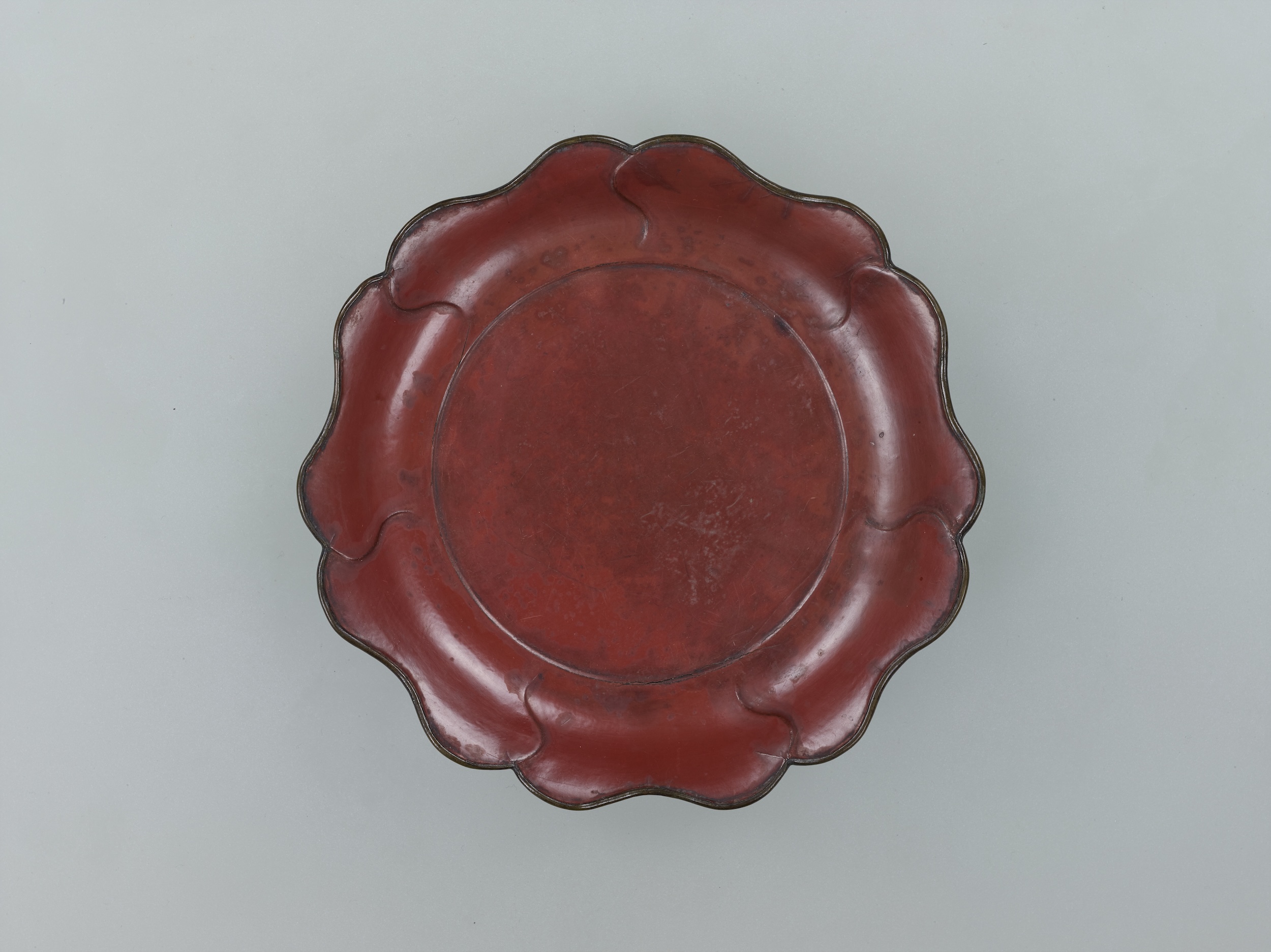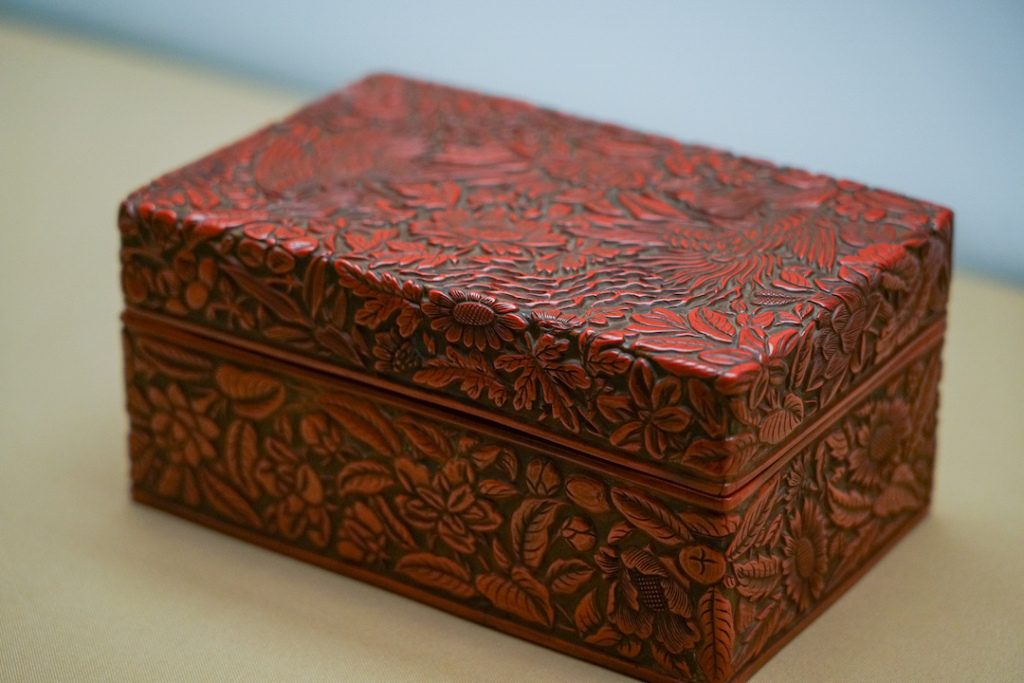

"This exhibition can be said to be the first true dialogue exhibition of Eastern and Western paintings in China. There are many difficulties in the preparation and presentation of the exhibition." Ling Lizhong, one of the curators of the exhibition and director of the Calligraphy and Painting Research Department of the Shanghai Museum, said The Paper said that in terms of academic research, it needs to take into account both the East and the West; secondly, it also needs to have rich collections to reflect it. “It can be said that only the combination of academic research and rich collections can make this exhibition possible.”
This exhibition deliberately highlights "dialogue" in the exhibition design, and perfectly integrates Chinese and Western works in one exhibition hall through spatial echoes. The exhibition hall design is divided into several spaces, distinguished by "macaron colors" such as blue, pink, and orange. The spaces are both independent and connected to each other. As you walk along the winding paths, a romantic and aesthetic atmosphere circulates in the exhibition hall.

exhibition site
The 18 Western art works led by Leonardo da Vinci are located on the main axis throughout the entire exhibition hall, while the 18 Chinese paintings are semi-enclosed and unfold a narrative around the main axis. Located in the middle of the central axis is Leonardo da Vinci's "Woman with Flowing Hair", and this is also the absolute "C" position of the entire exhibition hall. Standing in front of this painting, through the arches and flower windows on the exhibition wall, you can see The most important ancient Chinese paintings in this exhibition can be seen from different angles.
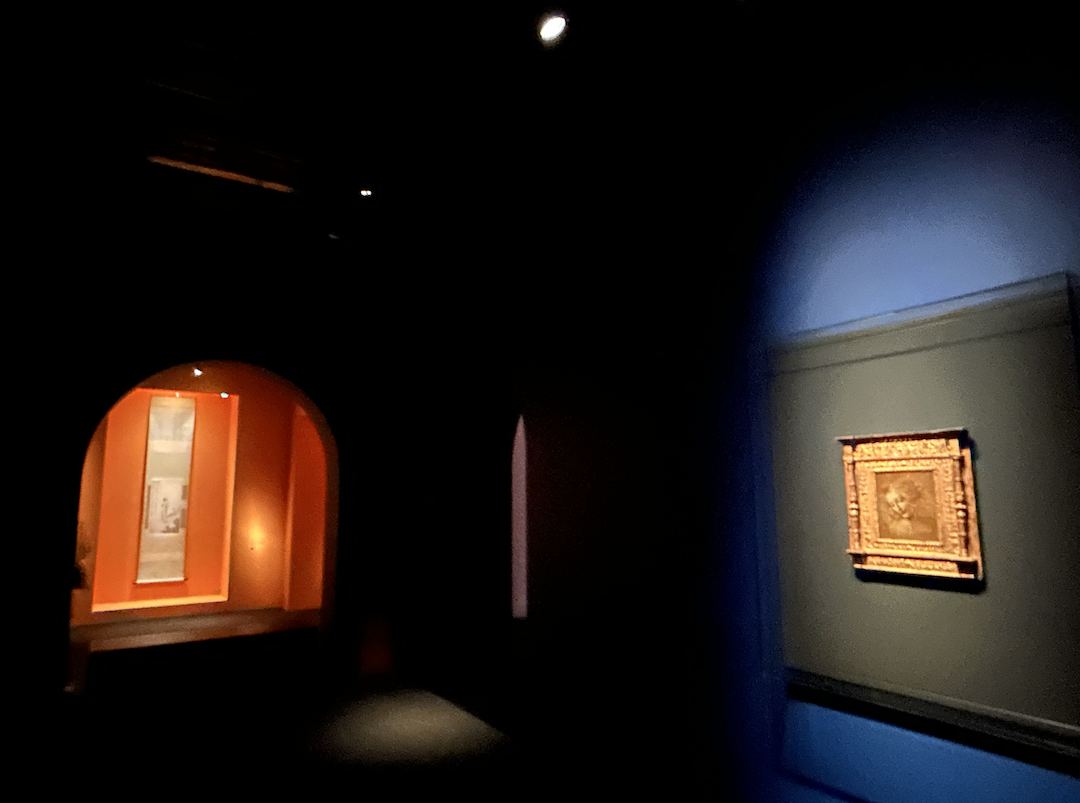
exhibition site
To the upper left, you can see the masterpiece "Autumn Wind Fan" by Tang Bohu from the Ming Dynasty. In the center of the painting, the lady standing on the slope looking back faces the side face, and the woman with flowing hair, eyes lowered, is looking at each other at an angle.
"It sounds like the Renaissance and Leonardo da Vinci's era are very far away from us. In fact, it corresponds to our Ming Dynasty. Chinese painting has gone through several rounds of development." Ling Lizhong, director of the Painting and Calligraphy Department of the Shanghai Museum, said, "From the perspective of time, Look, the cultural and artistic center of the West during the Renaissance was the Florence area, which corresponds to the Wumen area in China at the same time. They had the "Three Masters of the Renaissance" and we have the "Four Masters of the Ming Dynasty". Here we chose Tang Bohu and Leonardo da Vinci. The dialogue is also a dialogue between two talented young people, both of whom became famous at a young age.”
"Autumn Wind Fan Scroll" is a masterpiece of Tang Bohu in his later years. It depicts a lady with a clear and gentle face standing in a corner of the courtyard, holding a fan and meditating. This work is a self-portrait in which the artist used the literary allusion of Ban Jieyu of the Western Han Dynasty to describe himself and lamented the ups and downs of his life and the harshness of the world. "Woman with Flowing Hair" depicts a woman with her head looking down. Like many other portraits by Leonardo da Vinci, this work is very charming. Da Vinci used small wavy strokes to outline the outline of the woman's hair. Make it look like it's blowing in the wind.
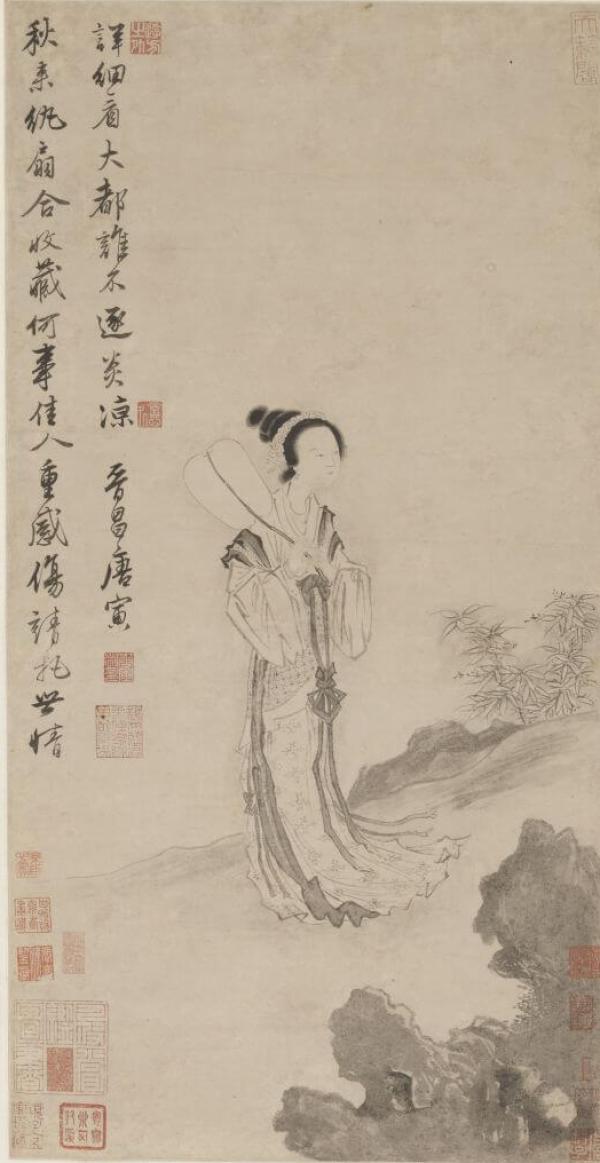
Tang Yin (1470-1523), circa 1520, ink on paper, Shanghai Museum

Leonardo da Vinci (1452-1519) circa 1492-1501 National Gallery of Art in Parma
"The technique and style of this painting are unique among Leonardo da Vinci's works." Ling Lizhong said, "Its elegant and mysterious feeling is achieved through a very freehand painting method. Some scholars believe that he left it unfinished." As a result, some scholars believe that he is deliberately pursuing such an incomplete style, which can leave people with space for thinking and reverie. This painting is very close to the charm of our oriental Chinese paintings."
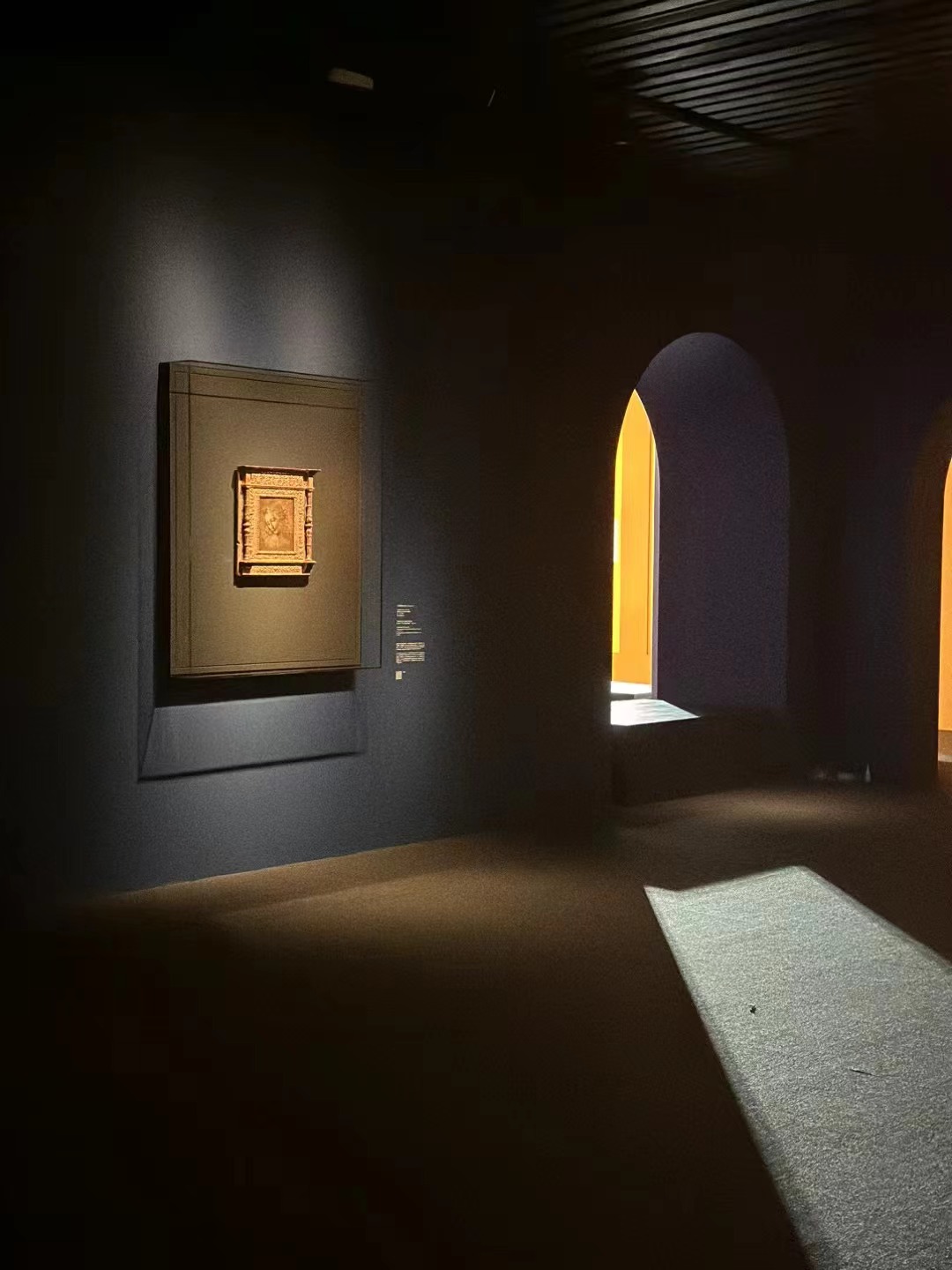
exhibition site
"Autumn Wind Fan Scroll" was created about ten or twenty years later than "Woman with Flowing Hair". In the Chinese Painting Gallery of Ancient Dynasties, which is about to reopen, they specially selected Tang Bohu's "Huang Mao Xiao Scenery Scroll". This work is closely related to Leonardo da Vinci's "Woman with Flowing Hair" was created in about the same year. "The works that can be displayed in the special exhibition are limited. If the audience wants to know more about the calligraphy and painting art of the Wumen area in the 15th century, they can come to the calligraphy and painting museum to continue viewing."
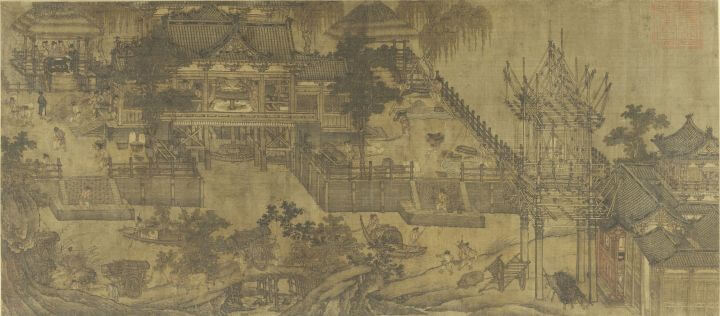
Anonymous of the Five Dynasties, about 960, ink and color on silk, Shanghai Museum
To the right, you can see another national treasure-level painting in the Shanghai Museum of Art - "Gate Turning Scroll" from the Five Dynasties. The volume "Turn the Wheel at the Gate" is evidence of the prosperity of water conservancy in the Tang and Song Dynasties. More than fifty people were passing through, grinding flour and carrying grain, or having fun and drinking. They were bustling with people chatting and talking. Among them, the colorful building, Huanmen, wine curtain, and wheelbarrow are detailed and rigorous, which can be mutually confirmed with Zhang Zeduan's "Along the River During Qingming Festival" in the Northern Song Dynasty, and is full of rational spirit. The water mill and water hammer in the picture show the outstanding achievements of the ancients in the application of water power. Wandering around the exhibition hall, visitors can also find echoes of Western paintings, such as Leonardo da Vinci's "Large Human Wheel: Atlantic Codex", which reflects the artist's scientific and rigorous concepts in creation and observation of nature. and realization.
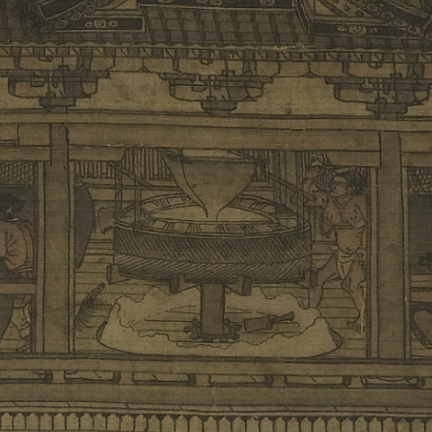
Anonymous "Scroll of Turning Cars at the Gate" (detail), Five Dynasties, collected by Shanghai Museum

Leonardo da Vinci, "Machine with Four Crossbows" (detail), circa 1485-1487, Codex Atlanticus, page 1070r (first page 387v-a), Collection of the Ambrosio Library and Art Museum, Milan
"From the perspective of the relationship between painting science and art, this painting is a perfect combination. It is both a work of art and a demonstration of the advancement of our science and technology." Ling Lizhong said, "From the perspective of style history, the era in which Leonardo da Vinci lived advocated rationality. , science, the study of light and shade and perspective in nature, which corresponds to the realistic style of Chinese painting, so we also selected works from the Five Dynasties and the Northern Song Dynasty that added a realistic style. The "Gateway Turning Picture Scroll" of the Five Dynasties embodies another dimension of our contrast. "
In the exhibition, the same painting subject matter, but the expression techniques and styles of Chinese and Western painters are very different, which can be seen from the Yuan Dynasty's "Long Pines Tying Horses" and Leonardo da Vinci's manuscript "Horse".
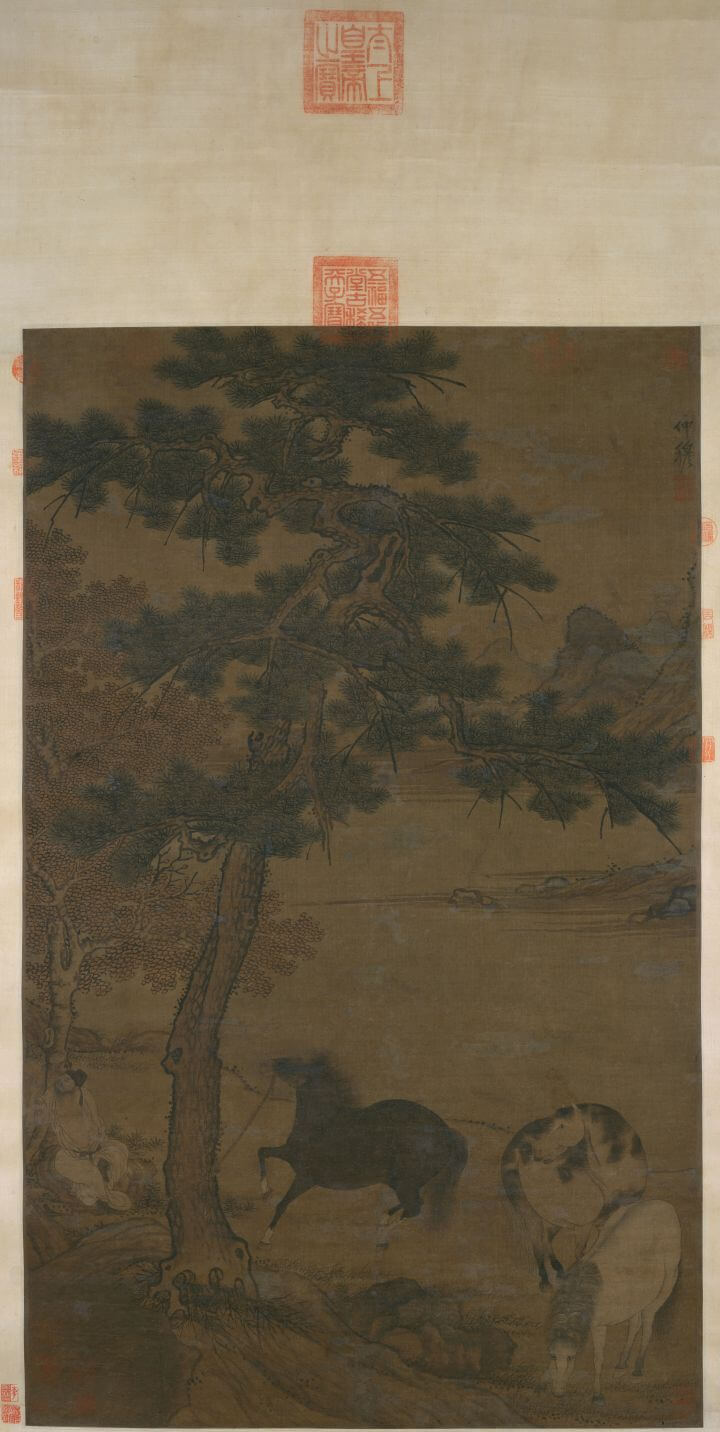
(Biography) Zhao Yong's "Scroll of Horses Tied to Long Pines" (detail), about 1360, collected by Shanghai Museum
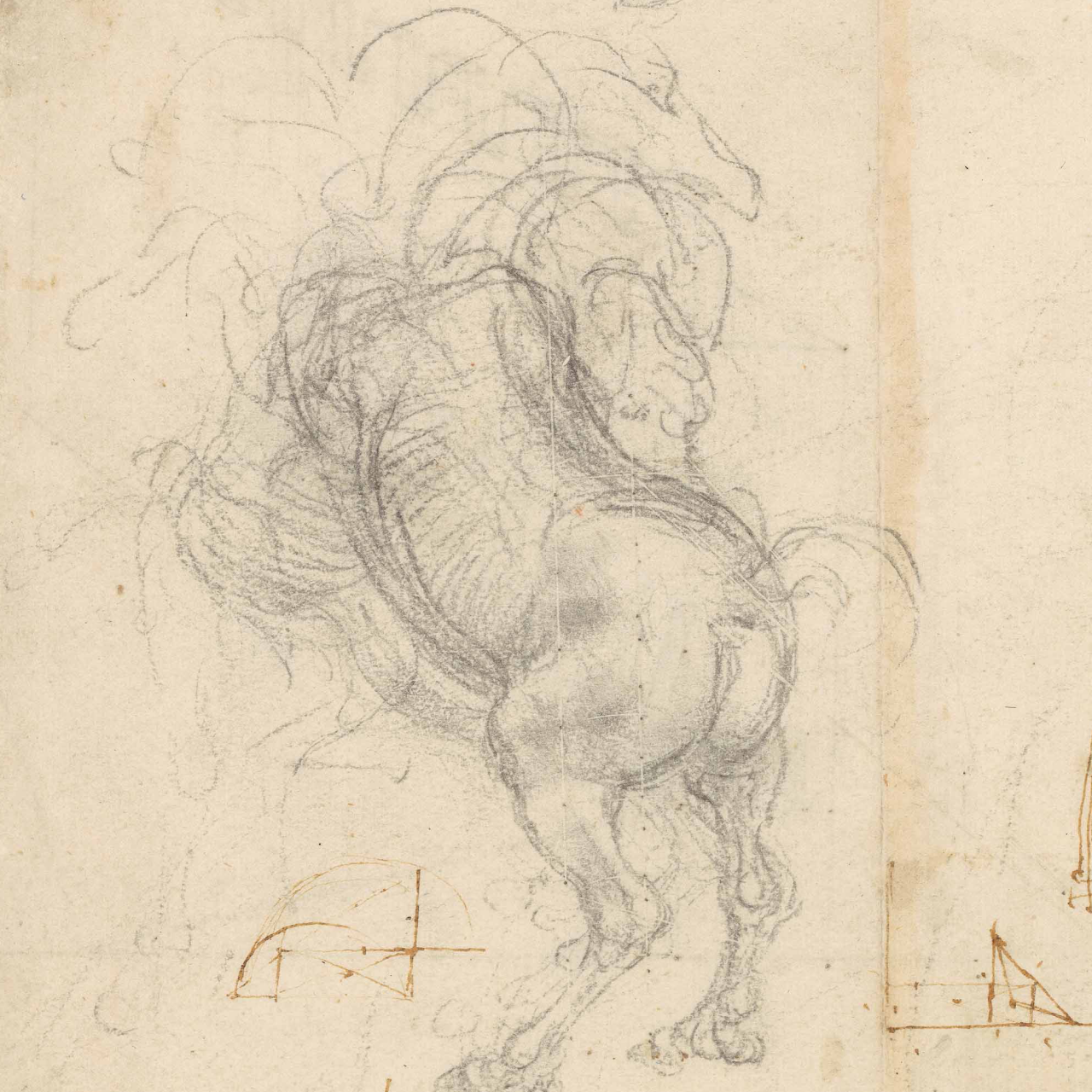
Leonardo da Vinci, "Cannon Firing Scene and a Horse" (detail), 1503, Codex Atlanticus, p. 72r, Collection of the Ambrosio Library and Gallery, Milan
Leonardo da Vinci painted horses for research purposes. He created countless images of horses throughout his life. He once recommended himself to make a bronze equestrian statue for Duke Sforza of Milan. Although it was not implemented in the end, he left behind precious manuscripts. These manuscripts of his are basically studies of partial images of horses, including legs, body muscles, bones, line directions, etc. The horses painted by Zhao Yong are leisurely and contented, and full of charm. In comparison, Leonardo da Vinci's horses are more concrete. Although they lack the charm of Chinese horse paintings, they are more scientific and conform to the anatomical structure. "This difference is based on the different concepts of Chinese and Western painting." Ling Lizhong said.

Liang Kai (active in the 12th-13th century) circa 1204, ink on paper, Shanghai Museum
In addition, the audience can also find "clues" of echoes and dialogues between Eastern and Western art in the exhibited works such as "Portrait of a Taoist King" and (biography) Qiu Ying's "Scroll of Avalokitesvara". "The Portrait of the Taoist King in Line Drawing" itself is also a drawing for a large-scale mural. This kind of line drawing developed into an independent art style in the Song Dynasty. Leonardo da Vinci, including Michelangelo's "Legs" on display, are all manuscripts of large sculptures or paintings. In addition, judging from the subject matter, it belongs to a religious theme. The picture depicts heaven, earth, and hell. Many of the themes of Dante's "Divine Comedy" during the Renaissance came from religion.

"Legs", circa 1524-1525 Michelangelo Buonarroti (1475-1564) Casa Buonarroti, Florence
Darrenli, one of the Italian curators and director of the Cultural Section of the Italian Consulate General in Shanghai, told The Paper that how to understand the dialogue between Eastern and Western art presented in the exhibition requires the audience to add their own imagination, because whether it is Leonardo da Vinci, Tang Bohu, or any of the Chinese and Western artists in the exhibition hall have never met, and no real dialogue has taken place between them. "But we put these works of art here, hoping that the audience will discover through their own imagination that there are actually many similarities between Chinese and Western art. After an artist creates a work, his masterpiece belongs to all mankind."

exhibition site
